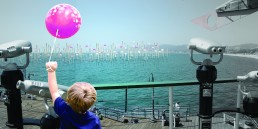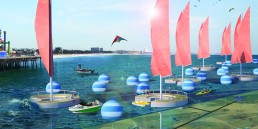
Noctilucales
Submission to the 2016 Land Art Generator Initiative design competition for Santa Monica
Team: Ricardo Avella, Andrés Tabora, Michael Henriksen, Carla Betancourt, Silvia Mercader, Laura Vera, Oriana De Lucia, Martin Von Bülow, Laura Vivas, Miguel Rosas (representing: Tabora + Tabora Landscape Architecture, ATA avella taller de arquitectura, WavePiston)
Artist Location: Caracas, Venezuela
Energy Technologies: wave energy converter (by WavePistonTM)
Water Harvesting Technology: reverse osmosis desalination
Annual Capacity: 4,200 MWh, less the energy used for desalination (up to 14 million liters per year)
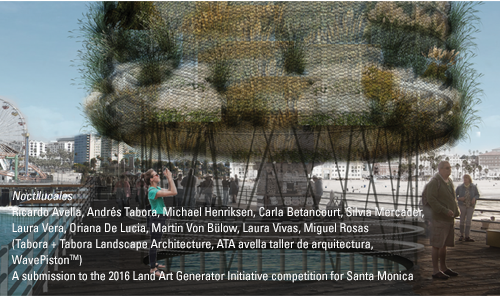
Open spaces are essential for an urban environment to reach balance. They are a form of escape—a place to get away from the chaos of the city.
Noctilucales preserves the horizon line of the ocean—the clean and uninterrupted view, where the sea stretches out before you until it meets the sky. To compromise the horizon is to destroy the landscape.
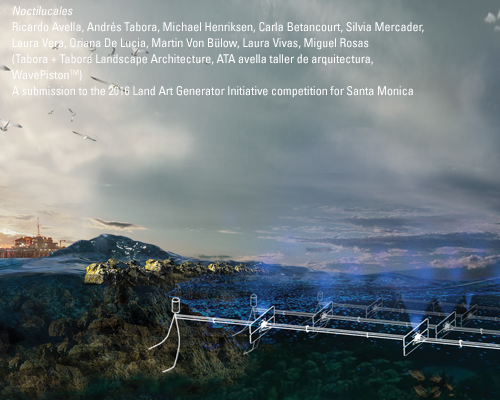
WavePistonTM has developed one of the less visually obtrusive wave energy technologies consisting of a network of moving plates installed along cables. The movement of the plates creates hydraulic pressure, which is converted into electricity. All of the components are submerged in the ocean, making the system invisible from shore. Only the small anchored buoys on either side of each WavePistonTM string can be seen on the horizon.
Noctilucales has two main elements—the submerged wave power farm with 200 energy collectors, and an extension of the Santa Monica Pier, increasing the surface of public space and providing a secure area for the turbine/generator and desalination plant.
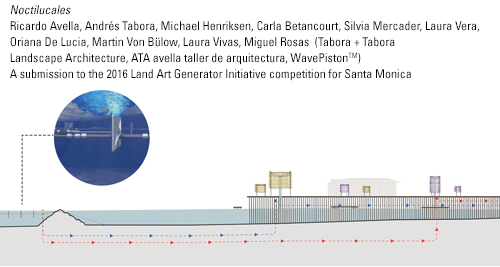
Underwater LED lights on top of each moving plate will cast a subtle glow at night. The energy collectors will be seen as a field of lights, producing a bioluminescent effect similar to the one created by natural Noctilucales in some parts of the world.
The hydraulic pipe runs along the breakwater to a turbine station on the new pier extension. The generator is made visible, with a glass wall built on one side to show the jets as they hit the turbine. In this way, people will follow the conversion process inside one of six green cylindrical structures. The system will supply electricity for the pier and the bioluminescent installation. The surplus electricity feeds into the city grid.
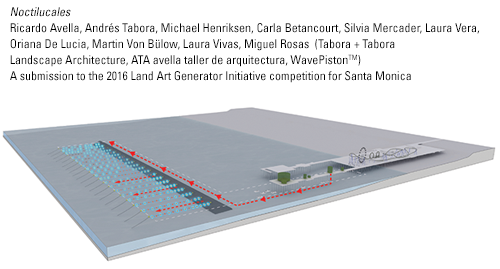
Some of the wave energy is used to produce fresh water with reverse osmosis desalination. With the kinetic energy of the waves, the cost of desalination can be greatly reduced. Instead of using pumps and motors, the ocean waves are able to naturally create the necessary pressures with the movement of the plates.
The desalination plant is transparent to demonstrate the process to visitors, and drinking water fountains along the new pier provide a first taste of the fresh water produced.

